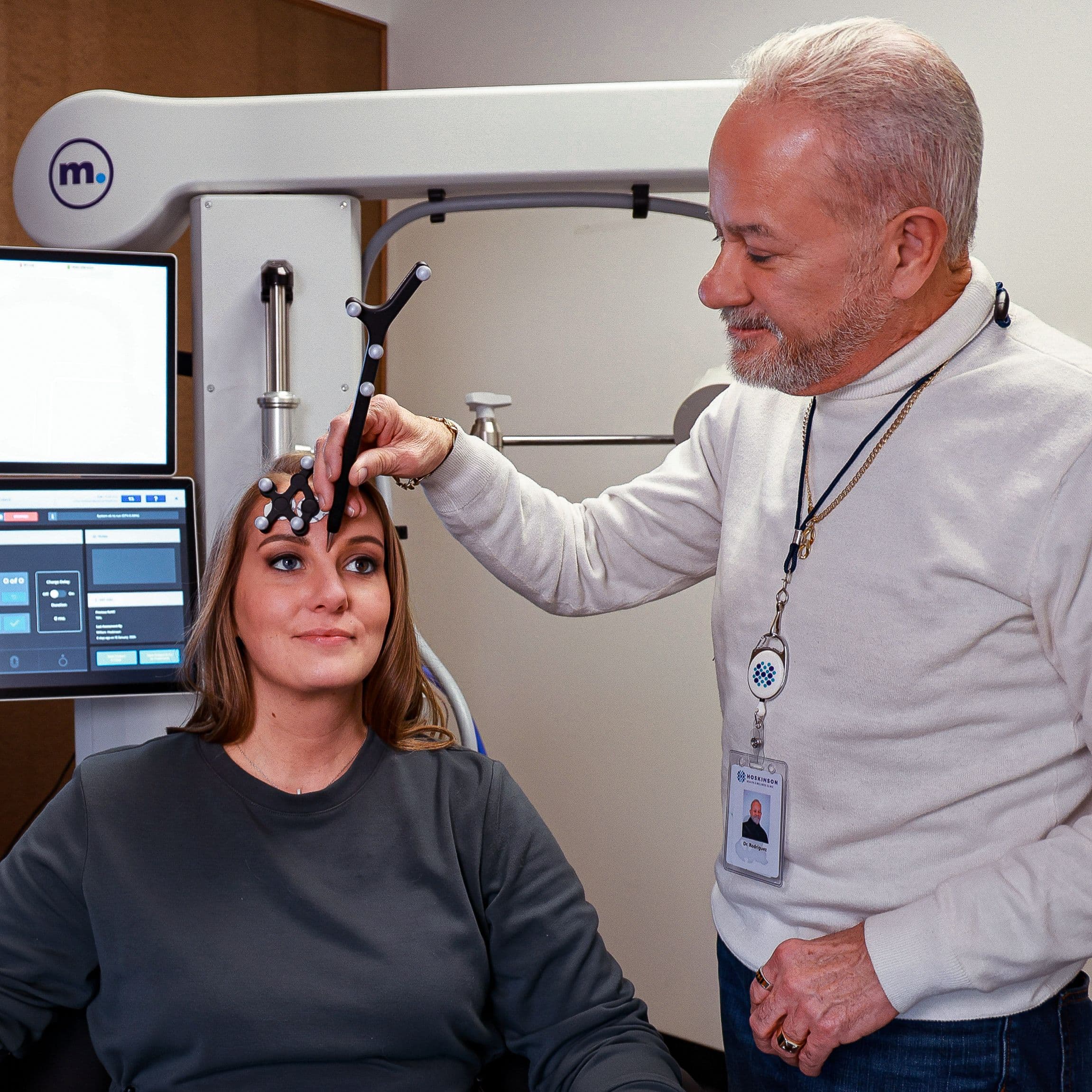
Mental health
Transcranial Magnetic Stimulation
What Is TMS?
Transcranial Magnetic Stimulation (TMS) is a series of repetitive, non-invasive, brief and highly focused magnetic pulses, designed to stimulate brain cells.
What TMS treats
If you have depression but have had no progress with talk therapy, your medication is not working or the side effects are intolerable; you may have what is known as treatment resistant depression. Transcranial Magnetic Stimulation (TMS) is a proven alternative that is effective in the treatment of Major Depressive Disorder (MDD).
How it works
In depressed patients, the electrical activity in certain areas of the brain is shown to be reduced. TMS targeted in these areas, reawakens these cells, increasing brain activity to appropriate levels.
The difference between TMS and Anti-depressants
TMS is typically prescribed when antidepressants have failed, or the side effects are intolerable. Antidepressants are systemic, which means that the medication is absorbed into the blood stream. This can cause numerous side effects. TMS is a noninvasive, outpatient procedure with no systemic side effects.
Is TMS an option for me?
In the US, TMS therapy is approved for adults with Major Depressive Disorder (MDD), who have failed to achieve satisfactory improvement from prior antidepressant medication in the current episode. This means that if you have been diagnosed with MDD and medications are not working, or the side effects are intolerable you should ask your doctor about TMS.

What to expect during a TMS treatment
TMS is performed in a doctor’s office or clinic. Treatment sessions last from 3 - 37.5 minutes and are typically performed 5 days per week, over a six-week period.
You will be seated in a comfortable chair, some measurements may be taken and you may be provided with earplugs.
Your doctor will position the magnetic coil on your head and treatment will begin. You may feel a moderate tapping on your head under the treatment coil and you will remain awake and alert throughout treatment.
Following your session, you will be able to drive home and you can
resume normal activities for the rest of the day.
What TMS feels like?
The magnetic coil which delivers TMS is positioned on the head. You will hear a clicking sound and feel a tapping sensation on your head when the magnetic pulses are delivered.
Possible side effects
TMS is a safe and well tolerated treatment that is not associated with any of the systemic side effects typically experienced with antidepressants. Clinical studies show that the most common side effects are mild to moderate scalp discomfort and mild headaches, both of which are short term.
Is TMS covered by my insurance?
TMS is covered by most insurance providers Including Medicare (and also by Medicaid in some states). Prior authorization is typically required for insurance coverage - your physician will manage this process.